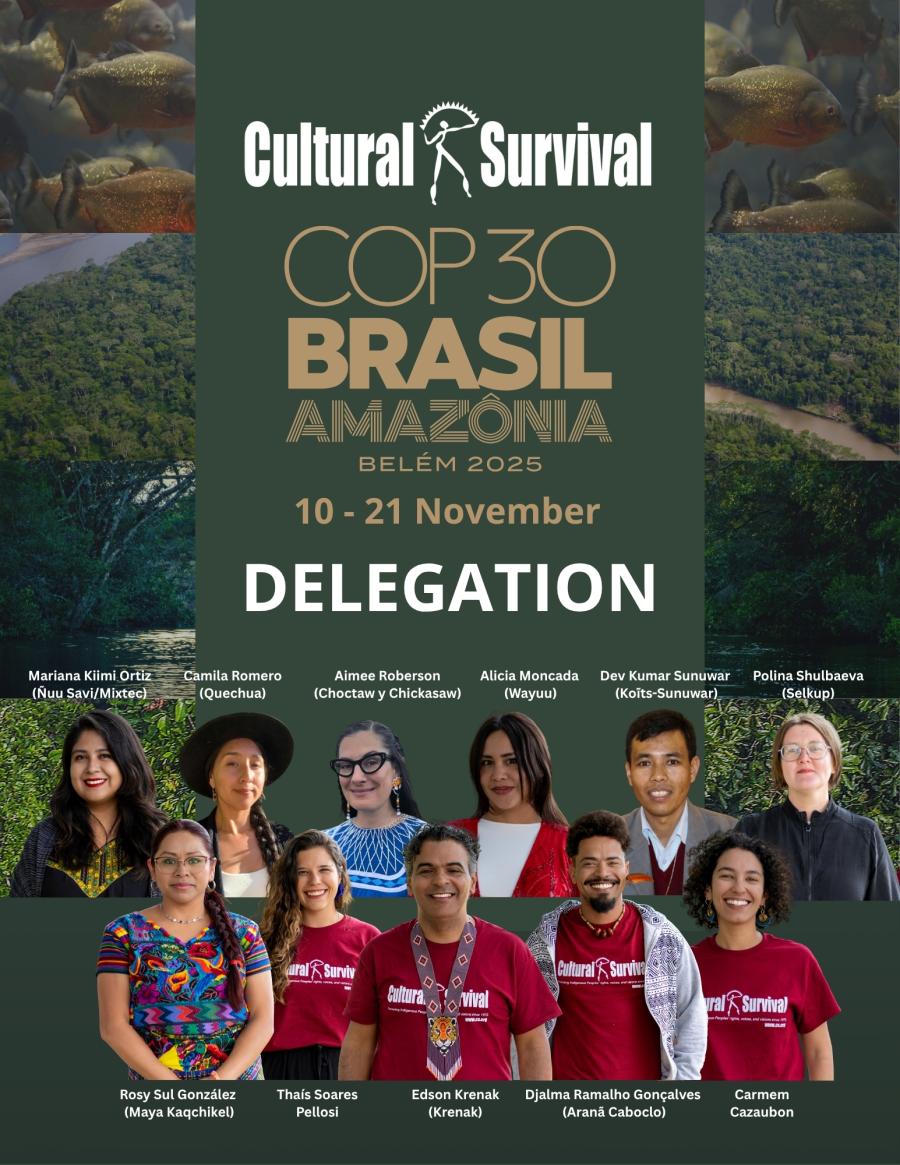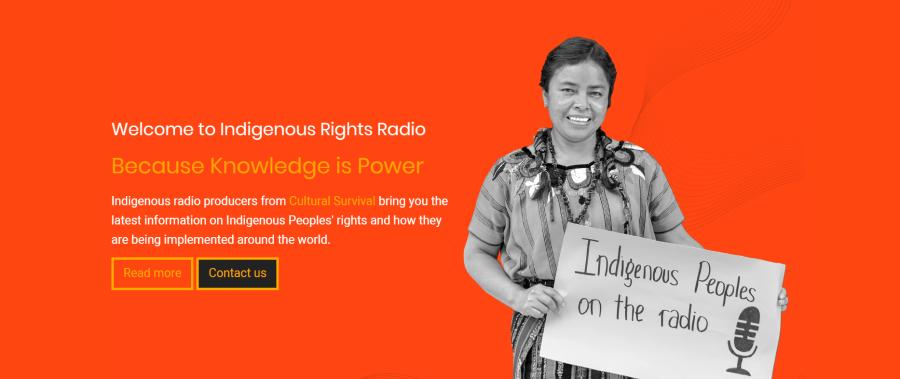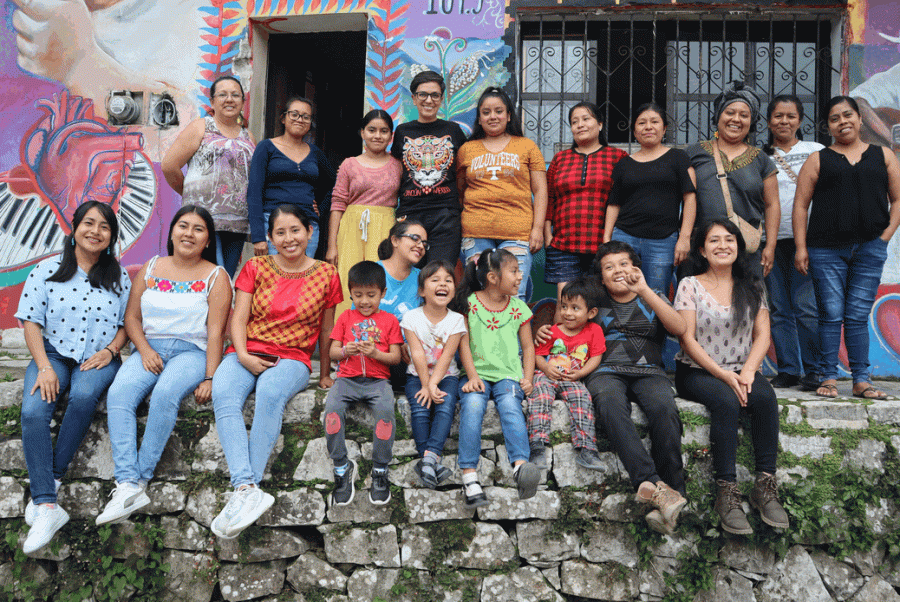Our intent with this issue of the Quarterly was to identify local-level development programs that were designed and run by indigenous peoples or ethnic minorities that may or may not have received assistance from outsiders. We found, however, that many projects, while identified as "grassroots," i.e. benefiting local populations, have been designed, implemented and managed by national or international organizations.
For indigenous people who are attempting to address serious social, economic or political problems, development is not separated from everyday life. Thus, successful development strengthens a community by enhancing its ability to identify and work collectively to solve local problems and to defend its own interests. For indigenous people, a project is one small, usually by itself even insignificant, aspect of what is happening locally.
Outsiders talk about specific projects and attempt to evaluate their success or failure in terms of the project as they designed it. Because such people think in terms of projects, they tend to separate the project from the community itself. As a result, while a lot of development is taking place at the local level for indigenous peoples and ethnic minorities, there is little development with outside funds that is being undertaken by them.
There is little agreement on what constitutes grassroots development, except that for most people it represents an alternative to the massive development projects sponsored by states, usually with funding - and often direction - from such agencies as the World Bank or the US Agency for International Development (AID). Since grassroots development is a reaction against the types of development undertaken by such agencies, it is important to explore briefly the recent history of large-scale development programs.
Development Efforts Since World War II
As a result of the experiences gained in post-World War II European reconstruction, the international community decided, both individually and collectively, that state-sponsored development could reduce conflict and expand foreign markets by improving the standard of living of people throughout the world. Initially, development focused on improving basic infrastructure - roads, dams, railroads, ports, communication. Once these costly bottlenecks were removed, it was assumed, economies throughout the world could "take off."
In the 1960s, development agencies had turned their attention to "integrated rural development" programs which were intended to build upon existing infrastructure. Such programs were based on the assumption that local economic systems were the cause of poverty and instability and therefore had to be replaced. No aspect of the local economic system was left untouched in the integrated projects - crops, production systems, markets, seeds, fertilizers, equipment or credit. Technologies and ideas for the projects were imported and rarely addressed local priorities. Inevitably such projects destroyed the fabric of local life. In addition, benefits rarely "trickled down" to the needy who were, instead, often further impoverished.
Critics were quick to point out the financial dependencies integrated development created as well as its tendency to concentrate resources and income in the hands of a few. Such programs often adversely affected the poor by reducing food supplies and possibilities for outside employment. Integrated development came to be seen, even by its proponents, as a hit-or-miss proposition. Those interested in development then decided that what was needed was to identify the groups of people to be assisted and then determine how best to help them. The poorest of the poor or women were often targeted by projects of this type. Through such projects, however, it became clear that impoverishment was often a byproduct of development programs which reinforced imbalances of power.
More important than the stated economic goals of multilateral and bilateral development projects were the unstated goals of alignment within a world political and economic system. Development assistance, whether from a single government or from a multilateral agency such as the World Bank, was intended at the very least to promote stability by reducing conflict and centralizing power in states. States, and the elites or ethnic groups who dominate them, used the foreign exchange earned from the projects and the exports generated to buy arms with which to defend themselves against peoples either who wanted to share power or who had been bypassed or actually impoverished by development. More often than not, since World War II, development has increased local conflict and created well armed regimes that are isolated from the populations they rule.
The Grassroots Alternative - Theory and Practice
Grassroots development came to be seen as an alternative to the problems associated with massive development programs. As a result it became all things to all people. Individuals and organizations began to work on alternative approaches to support local development, but often their models were merely scaled down versions of those used by larger development organizations. Furthermore, projects are still identified by outsiders who also design and implement them from above.
As the articles in this issue illustrate, there are a number of worthy attempts to support local development efforts which strengthen group identity and enhance their ability to take charge of their own destinies. As a result of this type of work, the terms of the development debate have been altered; massive amounts of funds and imported ideas are not the best way to eliminate poverty. Successful projects must involve local groups and address issues that are important to them.
Many organizations have improved their efforts tremendously in this regard. However, even these efforts need to be monitored closely. Misguided grassroots development efforts by outsiders, because they are aimed at the local level, can be more destructive than the hit-or-miss efforts of large scale projects. Thus, it is important to examine closely the involvement of local organizations in the design and implementation of projects as well as the relationship of local organizations that are established by states, often states that are dominated by ethnic groups who are antagonistic to the groups supposedly being assisted. Similarly, local development can be enhanced by ideas and funds from other parts of the world which can come via international organizations. But, care should be taken that these inputs do not make communities dependent on outside sources of funding or specialists.
Most local development is natural process that takes place through the initiative of individuals, communities and local organizations who have no contact with outside funding agencies. People invariably want to improve their lot, and will exchange ideas and experiences with neighbors. Out of such dialog, they will tailor what they learn to a particular situation and the need for cultural continuity. The organizations working with local groups on such issues might do well to follow this example, and document their efforts so that others can learn from their experiences. Rather tan imposing ideas based on outside experience - which create a state of friction within a community and require continual revision and manipulation in order to fit - outside agencies should use as their point of departure local knowledge and goals. In other words they can help create an environment in which the existing seeds of local initiative are allowed to grow.
In the final analysis, indigenous people have the desire and the ability to regain control of their communities, their development efforts and their destiny. Outside agencies should support these efforts, not take charge of them. The grassroots development projects discussed in this issue, and elsewhere, should be evaluated in these terms.
Article copyright Cultural Survival, Inc.



